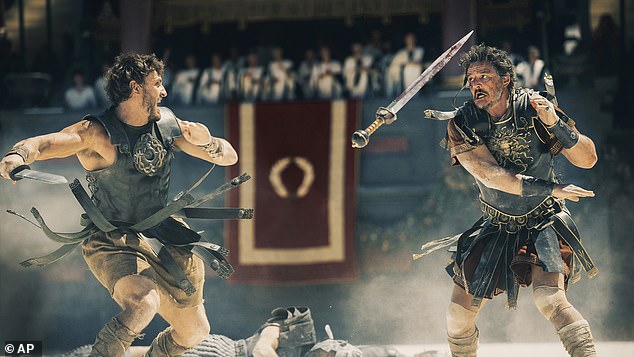It was a contest that continued, the crowd shouting for more as the two warriors fought.
Without either of the gladiators having killed the other, it was up to Emperor Titus to choose the winner of the first fight in the brand new Colosseum in Rome.
But as historian Dan Snow recounts in a Channel 5 documentary tonight, Titus was so impressed by the spirit of the two men, Priscus and Verus, that he declared them joint victors and freed them.
That fight in the year 80 AD. C., almost 2,000 years ago, marked the beginning of 100 days of inaugural games in what was then known as the Flavian Amphitheater, which had taken six years to build.
In the games almost 10,000 animals died at the hands of hunters called bestiarii and in one day alone there were fights between 3,000 gladiators.
Ridley Scott’s new epic Gladiator II brings to life the dark majesty of the Colosseum, as Paul Mescal’s Lucius Verus confronts the power of imperial Rome.
Although it is largely being received well by critics and viewers, experts have pointed out some of the historical inaccuracies, such as scenes of gladiators riding rhinos and the presence of man-eating sharks.
Ridley Scott’s new epic, Gladiator II, brings to life the dark majesty of the Colosseum; Now a television documentary reveals what happened in the first fight in the arena.

Historian Dan Snow recounts what happened in the Channel 5 documentary The Colosseum: The Arena of Death
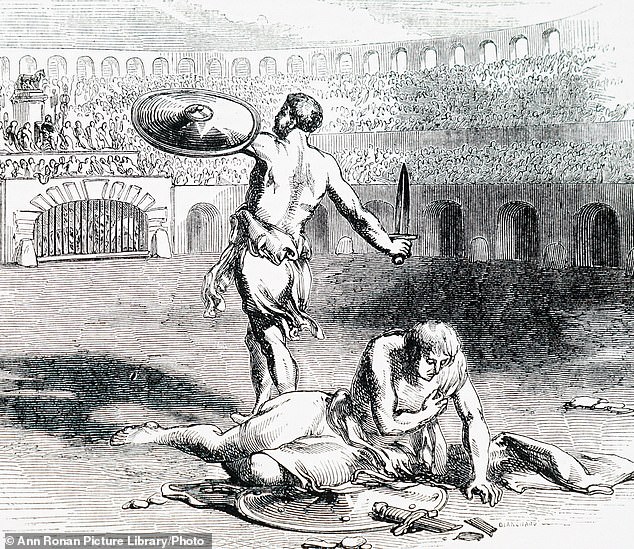
Engraving depicting gladiators fighting in the Colosseum in Rome
But the real fights at the Colosseum didn’t need sharks or men riding rhinos to be captivating.
Referring to the Roman writer Martial, who recorded the confrontation between Priscus and Verus, Snow says in The Colosseum: The Arena of Death: ‘Our source says that the fight went on and on.
«Both men were applauded by their followers in the crowd and by the emperor himself.
‘The men continued to fight desperately. The fight continued. But neither superstar could surpass the other.
‘Exhausted, the men finally stopped and turned to Titus. It would be up to the emperor to decide the winner.
‘In Hollywood, Titus would dramatically raise his hand, hoping to point his thumb up or down. But in reality, there is no evidence that any emperor did that.
‘Instead, silence would have fallen over the crowd, awaiting his decision.
‘Titus stood up, today he announced that there were two winners.
And then he went a step further and said that both men would be given the wooden sword that was given to the gladiators who were to be freed. Tito freed both men.
Although born a free man, Verus had been captured on the northeastern frontier of the Roman Empire in AD 76. He was brought back to Italy and made a slave.
He first worked for a year in a quarry, before having the opportunity to train as a gladiator.
Meanwhile, Priscus was a slave from Gaul (now France).
The Colosseum was built with 750,000 tons of carved stone, 8,000 tons of marble and 6,000 tons of concrete.
It could hold a surprising 60,000 spectators, more than Chelsea’s Stamford Bridge.
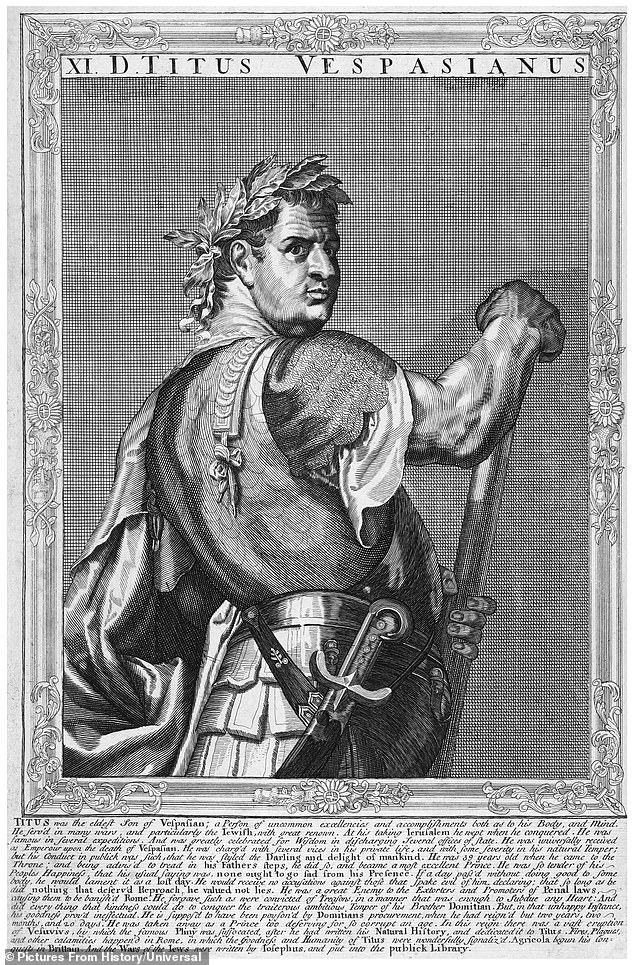
Emperor Titus, who ruled the Roman Empire when the Colosseum opened in 80 AD
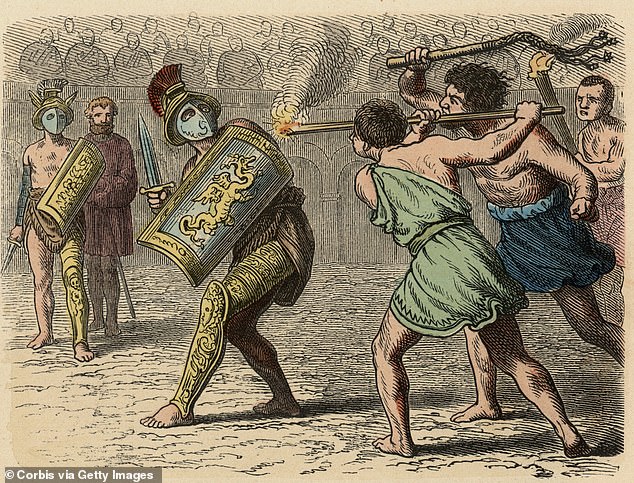
A cowardly gladiator faces devastating enemies during a fight.
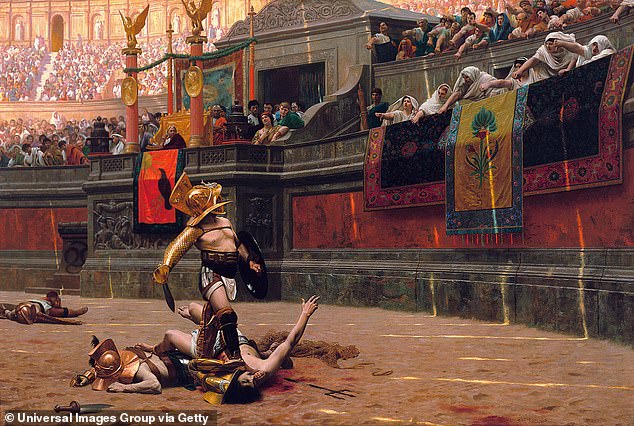
Gladiator fight in ancient Rome, painting by Jean Leon Gerome
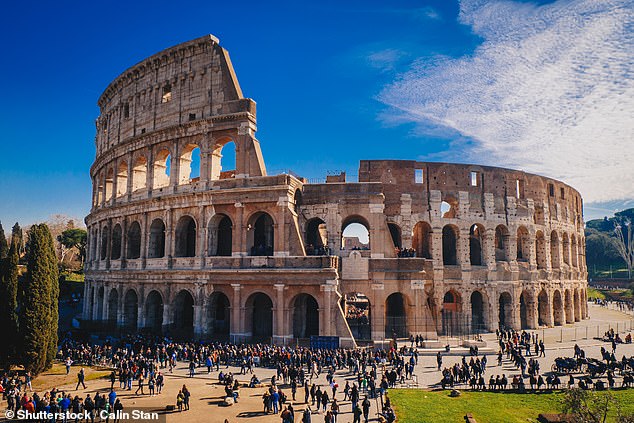
The Colosseum was built with 750,000 tons of carved stone, 8,000 tons of marble and 6,000 tons of concrete.
The Roman historian Tacitus said that competitions in the Colosseum were “a vice peculiar to the Romans, which children seem to absorb almost in their mother’s womb.”
When the gladiators signed the contract, they took a terrifying oath: “I undertake to be burned by fire, bound with chains, whipped, and die by the sword.”
They came largely from prisoners of war, criminals and slaves. Some freemen also volunteered under the same conditions.
The men typically lived and trained in barracks, where medical care was available to ensure their good health.
Masseuses, accountants, gunsmiths and security guards were often on staff. This last group was there to make sure the gladiators did not escape and get weapons.
Gladiators received cash prizes for winning their fights, and those who succeeded could gain popular support to buy their freedom.
Graffiti found in private homes and brothels demonstrate that some of the combatants felt irresistible to women.
One warrior, Celadus, is called “the hero and heartthrob of the girls,” while another, Crescene, is “the lord and healer of the nightclub dolls.”
The day before the fight, the gladiators received a great banquet, which spectators could witness if they wished.
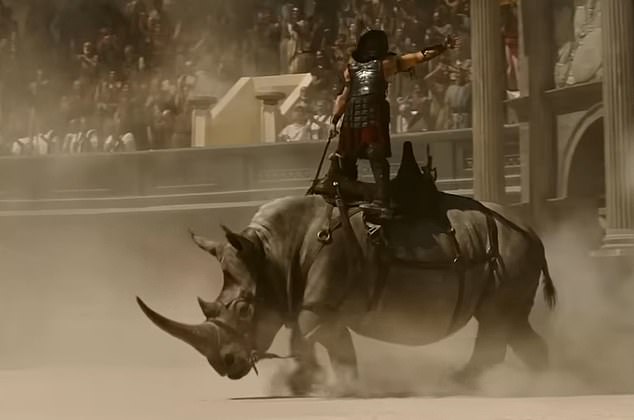
There is no evidence of men riding rhinos in the Colosseum, although such a scene appears in Gladiator II.
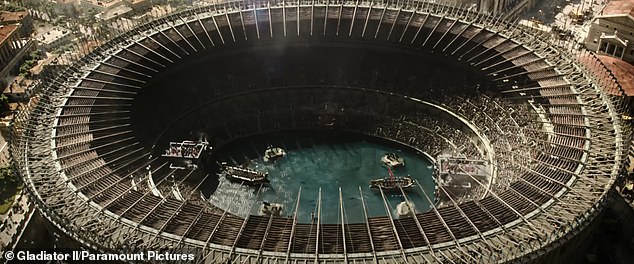
A naval battle actually took place in the Colosseum. Above: the scene from Gladiator II
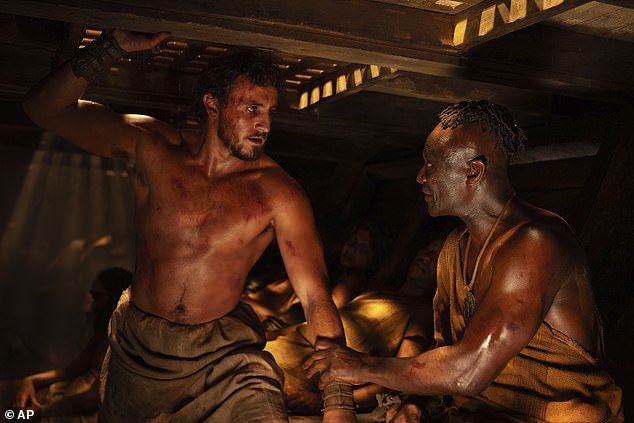
It’s true that almost all gladiators were slaves, but they were valuable, writes Dan Snow.
The day of a fight would begin with a large procession. When the gladiators reached the emperor’s tribune, they shouted: “Hail, Emperor, those who are about to die salute you!”
There were three broad categories of fighters. Some fought from chariots, others were heavily armed with fearsome weapons, and a third group was lightly armed and usually unarmored.
But the latter were equipped with nets, tridents, shields and daggers.
The fights were to the death, or until one of the men asked for mercy. Ultimately, it was up to the emperor to decide the outcome.
Once a victim was thought to be dead, an attendant dressed to look like Mercury (the god who escorted souls to Hades) would come out with a hot iron to check that they were not lying.
The surviving losers would be taken to the hospital, while the victor enjoyed the glory and prize money.
The Coliseum: The Arena of Death airs tonight at 9pm on Channel 5.

